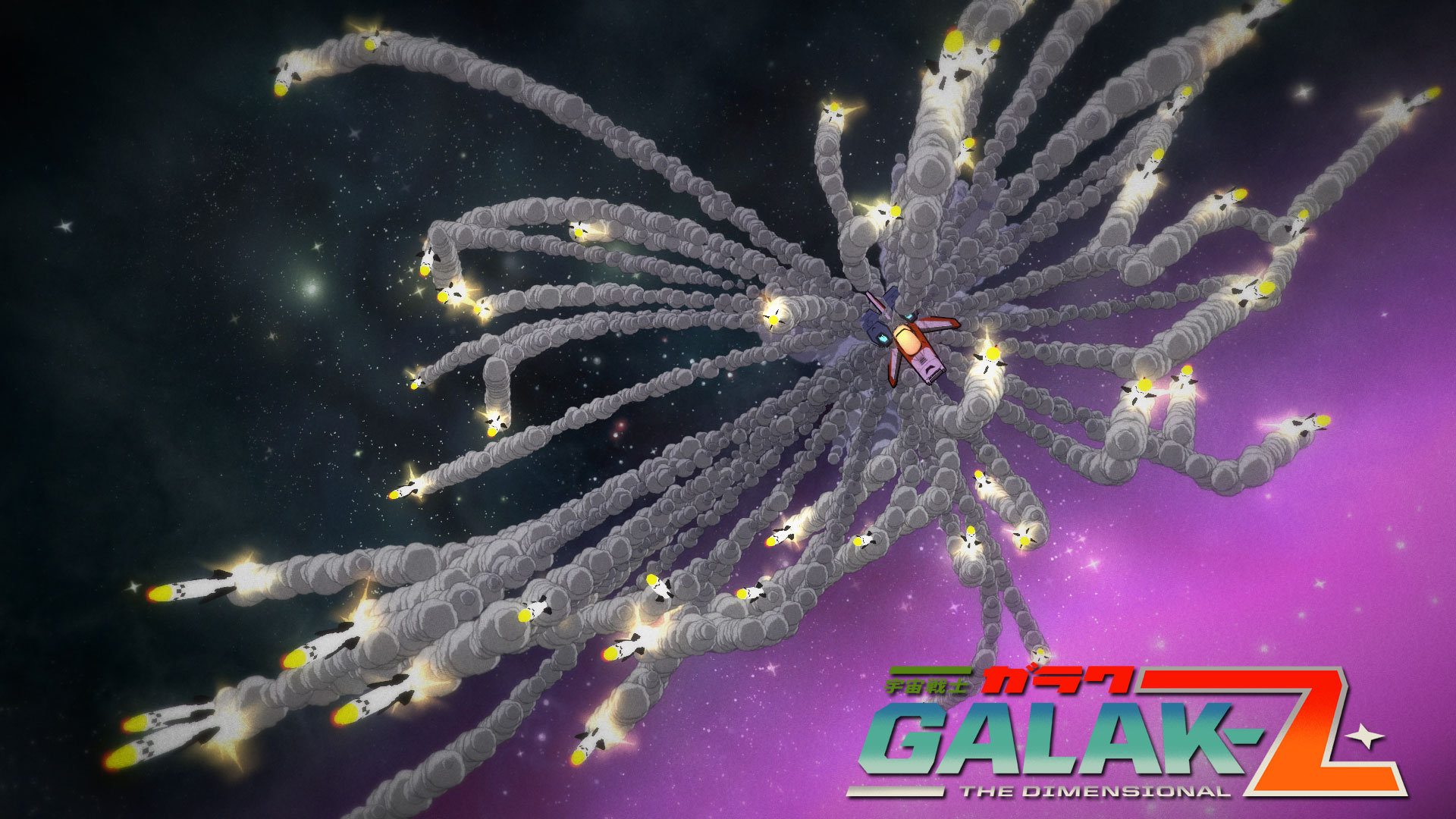Review: Galak-Z
Community
Galak-Z
17-Bit
Reviewed on: PS4
Also on: PC
Street: 08.04
It’s rare to see a game that is obviously influenced by past classics but still manages to feel totally original. In Galak-Z, the player takes control of a hotshot pilot named A-Tak in his quest to liberate the cosmos from raiders, space bugs and whatever else poses a threat to interstellar harmony. As the only pilot left after a devastating defeat, he and his team zip around the universe collecting resources and rescuing allies in their ultimate attempt to bring down an evil galactic empire.
Galak-Z plays like a mixtape of Saturday morning cartoons, arcade games and Anime circa 1984—the cultural Easter eggs are almost too much to handle. Pausing the game freezes it on a blurry VHS menu that is in dire need of tracking, and the voice acting is just the right amount of over the top. 17-Bit’s masterful use of color and shadows make the game’s graphics look retro and polished at the same time. This sparse and seemingly effortless visual world makes blowing the shit out of enemies extremely satisfying, as does the game’s difficult-to-master control scheme. As the game takes place in a one-man fighter in the middle of space, gravity is nonexistent. Players rely on two sets of rockets to propel the fighter forward and backward, often requiring some quick reflexes when faced with the chaotic movements of space-faring bad guys. Even the music manages to be a simultaneous grab bag of familiarity spiked with innovation. It’s not often that a game’s soundtrack strikes me as something I’d like to listen to on my own, but it did.
As challenging as the interstellar combat is, it’s not aggravating to the point of having a brain aneurysm. It’s a system that, with some practice, is actually pretty damn entertaining. The satisfaction that comes from firing my retro-rockets while shooting giant, aggressively pursuant space-bugs is hard to find elsewhere. The downside of this unpredictable combat is that, due to the game’s rogue-like genre, players can expect to die and restart a lot. This is the area in which I think the game is a bit too cruel. Episodes are five levels long, and have to be completed without dying in order to unlock the next set. Thankfully, the levels are randomly generated so all that dying doesn’t make exploring any less fun, although each mission having the same objective did tend to get a little tired. The plus side to finishing each level is that your ship usually gets an upgrade that makes the next round a bit more evenly-matched. In my many playthroughs so far, I have been impressed with the variety of laser beam upgrades. It’s one of the many Luftrauser-esque aspects of Galak-Z that I’ve come to appreciate.
With so many video games tacking on the word “retro” in their product descriptions, it’s easy for that word to become devoid of any true meaning—it’s also a cheap way for developers to cover up some crappy areas of gameplay. Galak-Z on the other hand is a perfect combination of the cultural weirdness that basically nurtured me and anyone else who grew up in the 1980’s. The beauty of this game is that it manages to capture all of that nostalgia without being derivative. Anyone who played Skulls of the Shogun knows that the maniacs at 17-Bit are solid game designers with a goofy sense of humor. Gamers who did not grow up with Voltron, the Thunderbirds or R-Type are still going to dig Galak-Z’s challenging control scheme and kickass music, but that lost generation of 80’s nerds is going to welcome this title into their game libraries as if it was an old, seizure-inducing friend.
